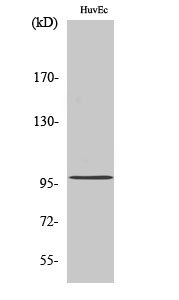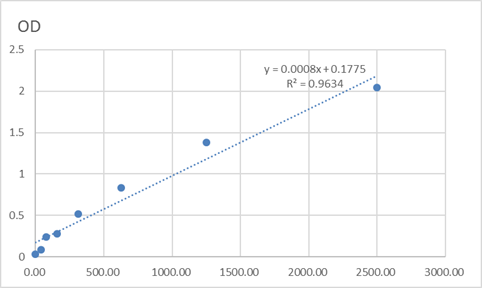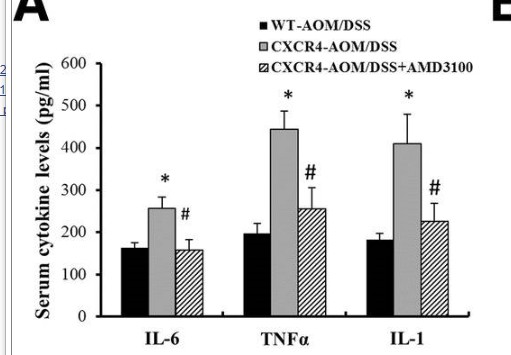Total MRTF-A Cell-Based Colorimetric ELISA Kit
- Catalog No.:KA3855C
- Applications:ELISA
- Reactivity:Human;Mouse
- Gene Name:
- MKL1
- Human Gene Id:
- 57591
- Human Swiss Prot No:
- Q969V6
- Mouse Swiss Prot No:
- Q8K4J6
- Storage Stability:
- 2-8°C/6 months
- Other Name:
- MKL/myocardin-like protein 1 (Megakaryoblastic leukemia 1 protein) (Megakaryocytic acute leukemia protein) (Myocardin-related transcription factor A) (MRTF-A)
- Detection Method:
- Colorimetric
- Background:
- disease:A chromosomal aberration involving MKL1 may be a cause of acute megakaryoblastic leukemia. Translocation t(1;22)(p13;q13) with RBM15. Although both reciprocal fusion transcripts are detected in acute megakaryoblastic leukemia (AMKL, FAB-M7), the RBM15-MKL1 chimeric protein has all the putative functional domains encoded by each gene and is the candidate oncogene.,domain:The N-terminal region is required for nuclear localization and the C-terminal region mediates transcriptional activity.,function:Transcriptional factor which uses the canonical single or multiple CArG boxes DNA sequence. Acts as a cofactor of serum response factor (SRF) and has the potential to modulate SRF-target genes. Suppresses TNF-induced cell death by inhibiting activation of caspases; its transcriptional activity is indispensable for the antiapoptotic function. It may up-regulate antiapoptotic molecules, which in turn inhibit caspase activation.,similarity:Contains 1 SAP domain.,similarity:Contains 2 RPEL repeats.,subunit:Forms a ternary complex with SRF on DNA. Interacts with MKL2.,tissue specificity:Ubiquitously expressed, has been detected in lung, placenta, small intestine, liver, kidney, spleen, thymus, colon, muscle, heart and brain.,
- Function:
- transcription, anti-apoptosis, positive regulation of biosynthetic process, positive regulation of macromolecule biosynthetic process, positive regulation of macromolecule metabolic process, positive regulation of gene expression,regulation of cell death, positive regulation of cellular biosynthetic process, regulation of apoptosis, negative regulation of apoptosis, regulation of programmed cell death, negative regulation of programmed cell death,regulation of transcription, positive regulation of nucleobase, nucleoside, nucleotide and nucleic acid metabolic process, positive regulation of transcription, positive regulation of nitrogen compound metabolic process, negative regulation of cell death,
- Subcellular Location:
- Cytoplasm . Nucleus . Subcellular location is tightly regulated by actin both in cytoplasm and nucleus: high levels of G-actin in the nucleus observed during serum deprivation lead to low levels of nuclear MRTFA, while reduced levels of nuclear G-actin result in accumulation of MRTFA in the nucleus (By similarity). G-actin-binding in the cytoplasm inhibits nuclear import by masking the nuclear localization signal (NLS) (By similarity). In contrast, binding to nuclear globular actin (G-actin) promotes nuclear export to the cytoplasm (By similarity). Nuclear localization is regulated by MICAL2, which mediates depolymerization of nuclear actin, which decreases nuclear G-actin pool, thereby promoting retention of MRTFA in the nucleus and subsequent formation of an active complex with SRF (PubM
- Expression:
- Ubiquitously expressed, has been detected in lung, placenta, small intestine, liver, kidney, spleen, thymus, colon, muscle, heart and brain (PubMed:11344311). Expressed in peripheral blood mononuclear cells (at protein level) (PubMed:26224645).
- June 19-2018
- WESTERN IMMUNOBLOTTING PROTOCOL
- June 19-2018
- IMMUNOHISTOCHEMISTRY-PARAFFIN PROTOCOL
- June 19-2018
- IMMUNOFLUORESCENCE PROTOCOL
- September 08-2020
- FLOW-CYTOMEYRT-PROTOCOL
- May 20-2022
- Cell-Based ELISA│解您多样本WB检测之困扰
- July 13-2018
- CELL-BASED-ELISA-PROTOCOL-FOR-ACETYL-PROTEIN
- July 13-2018
- CELL-BASED-ELISA-PROTOCOL-FOR-PHOSPHO-PROTEIN
- July 13-2018
- Antibody-FAQs



